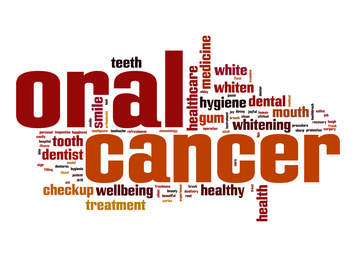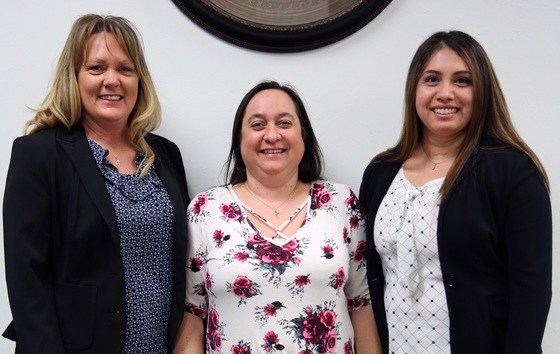|
Spring 2019

The 57th Oklahoma Legislature kicked off on February 4, 2019 with Governor Stitt's State of the State address. Also present were the cabinet secretaries. Lieutenant Governor Matt Pinnell gaveled in the joint session.
Legislators had a deadline of January 17 to file their bills, and a total of 2,834 bills were filed by the 149 members of the Oklahoma Senate and House of Representatives. Bills then had a deadline of February 28 to be heard in committee of their house of origin to advance to the floor. OHCA was tracking 193 bills at that time.
As of mid-March, the OHCA Government Relations team continued to track 91 bills. These bills had to be heard on the House or Senate floor by March 14 in order to keep moving through the process to possibly be signed into law.
April 11 was the second deadline for bills to be heard in committee. April 25 is the next deadline for bills to be heard on the floor from the opposite chamber.
Bills to note include:
- HB 2632 – Patient’s Right to Pharmacy Choice Act
- HB 2638 – Step therapy pharmacy bill
- SB 509 – Step therapy pharmacy bill (Sent to the governor)
- SB 251 – OHCA to use 3rd party for processes related to medical expense recovery
- SB 497 – Licensed pharmacists as medical providers
- SB 499 – Creation of hospital trusts
- SB 575 – School telemedicine
SB 456 was signed by the governor on March 13 and not only made our director a governor appointee but also dissolved our former board. We have received the appointments for 7 out of 9 board members and held our first meeting with the new board on April 1 to promulgate rules. We await the final two board members from the senate.
In May, the Legislature typically turns to the state budget. OHCA requested an increased budget for SFY 2020, notably, to increase provider reimbursement rates to 100 percent of Medicare. This would apply to almost all provider groups. The OHCA acknowledges the difficulties providers have undertaken in the past years as tight budgets have been balanced by provider cuts.
The Legislature must adjourn "sine die" no later than 5 p.m. on May 31, 2019.
Back to top

|
Spring 2019 SoonerCare Provider Training Workshops will be held at five locations statewide, beginning April 30.
Scheduled trainings will cover the Insure Oklahoma program, SoonerCare referrals, patient-centered medical homes (PCMHs), provider enrollment and contracting, claims resolution, and promoting literacy in the well-child visit through the Reach Out and Read program.
|
|
 |
The OHCA encourages providers and their staff to attend a workshop near them:
- April 30 – Lawton
- May 9 – Durant
- May 15 – Guymon
- May 22-23 – OKC
- May 29-30 – Tulsa
Please visit the OHCA Training page for specific times and locations.
Registration, complete class descriptions, as well as specific time and location information are available on our website.
We look forward to seeing you!
Don’t miss our Web Alerts! *Sign up to be notified about new SoonerCare training opportunities!
Did you know?
SoonerCare education specialists are available for one-on-one and group training for providers and health-related community workgroups and coalitions.
Education specialists can answer questions about OHCA policy, programs and procedures as well as claim issues and navigating the secure SoonerCare Provider Portal. Training can be conducted on-site, through virtual visits, at the training facility in OKC or other appropriate venues.
To schedule training, please email SoonerCareEducation@okhca.org or call 405-522-7422. You may also fax your request to 405-530-3288. Please include the provider’s name, SoonerCare provider ID number, a return phone number and a contact name with your request.
The OHCA Dental Unit is still a provider resource for prior authorization (PA) inquiries and general questions:405-522-7401.
Back to top
OHCA offices will be closed on the following dates, as they are observed as holidays by the state of Oklahoma:
- May 27, 2019 – Memorial Day
- July 4, 2019 – Independence Day
We will be happy to assist you during our regular office hours.
Thank you.
Back to top


A valid Oklahoma mailing address is required for all SoonerCare members.
During their office visits, please encourage members to update any changes to their address through the SoonerCare Member Portal (www.mySoonerCare.org). The process takes less than five minutes and helps to prevent interruption of their benefits. You can even download or order our new flyer (one side in English, one side in Spanish) to distribute in your office.
Members can also update their contact information by calling the SoonerCare Helpline at 1-800-987-7767.
Back to top
|

Keeping your office abreast of current dental codes and billing practices is part of ensuring that your patients’ health is tracked accurately. The Code on Dental Procedures and Nomenclature (CDT) is reviewed and revised each year – new codes are developed, and old and/or unused codes go obsolete. The Council on Dental Benefit Programs (CDBP) is responsible for CDT Code maintenance.
Following any CDT updates, the OHCA may make changes to the CDT codes covered by SoonerCare. Providers should read OHCA Provider Letters, Global Messages and other agency communications regarding changes to covered services.
Furthermore, to avoid confusion and inefficient billing, it is recommended that dental staff have a copy of the most current CDT manual available to them.
Below are some of the most recent CDT updates. This list is for informational purposes only and may not be all-inclusive:
- D1516 Maxillary, D1517 Mandibular (replaces code D1515) - Changed
- D1526 Maxillary, D1527 Mandibular (replaces code D1525) - Changed
- D5282 Maxillary, D5283 Mandibular (replaces code D5281) - Changed
- D9130: Temporomandibular Joint Dysfunction - New
- D9944 Hard Appliance,D9945 Soft Appliance, D9946 Hard Partial Arch (replaces D9940) - Changed
Back to top
|
Effective April 29, 2019, opioid morphine milligram equivalent (MME) daily totals greater than or equal to 180 will require prior authorization (PA) with patient-specific, clinically significant reasoning why the member requires 180 MME per day or more (limit applies to both short-acting and long-acting formulations).
Providers can access a patient’s MME totals by consulting the Oklahoma Prescription Monitoring Program (PMP) Aware system. The PMP Aware system may contain additional opioid claims not reimbursed by SoonerCare.
This is the second phase of an MME limit that is expected to be completed by July:
OHCA encourages providers to access the PMP site and begin tapering (where appropriate) those members who exceed the 100 MME threshold.
Beginning July 2019, a claim will process without a PA if the member’s total daily MME is not greater than or equal to 100 (current opioid PA criteria and tier structure rules will continue to apply). If the member requires daily MME totals of 100 or more, then the provider can submit an MME override request via form PHARM-111, available on the SoonerCare website (http://www.okhca.org/rxforms).
Please note: Medications provided for medication-assisted treatment (MAT) will be exempt from this policy.
Back to top
Dr. Courtney Barrett, OHCA Dental Director

April is Oral Cancer Awareness Month
According to Oral Cancer Foundation, one person every hour of the day will die from complications of oral cancer. OHCA encourages our providers to increase oral cancer awareness by speaking with patients about the risk factors for oral cancer, as well as the importance of early detection and prevention.
Though preventable and not as common as other cancers, oral cancer is particularly dangerous because in its early stages it may go undetected by the patient and can progress without pain or symptoms. The higher death rate associated with oral cancer is often as a result of the cancer being diagnosed late in its development. Oral cancer is frequently found after the cancer has metastasized to another location, most likely the lymph nodes of the neck. The survival rate for a localized diagnosis is more than twice as high as a metastasized cancer diagnosis, hence the importance of early detection. Patients who survive a first encounter with oral cancer have a higher risk of developing a second cancer – this increased risk factor can last for five to 10 years after the first occurrence.
|

Tobacco is single biggest risk factor for oral cancer and is responsible for most resulting deaths. The synergistic effect of tobacco usage and excessive alcohol consumption is another leading risk factor for oral cancer. Those at an especially high risk of developing oral cancer are men older than age 50 who are heavy drinkers and smokers. Chewing betel quid, excessive sun exposure, and consuming a poor diet may also contribute to the chances of developing oral cancer.
The leading cause of oropharyngeal cancer is human papillomavirus (HPV). HPV is the most common sexually transmitted disease in the United States. There are more than 100 strains of HPV, however, only nine are associated with cancers, and only HPV-16 is strongly associated with oropharyngeal cancer.
Oral sex has been identified as the primary mechanism of oral colonization of HPV-16 and is related to the increasing incidence of mouth cancer in younger, non-smoking patients. There is a lower incidence of death with HPV-positive oropharyngeal cancers, though they typically develop in the throat at the base of the tongue and in the folds of the tonsils making them difficult to detect.
It is recommended that adolescents get the HPV vaccine at age 11 or 12, regardless of whether or not they are sexually active. The HPV vaccine is most effective when given before age 13, but vaccination may be provided up to age 26. SoonerCare covers the HPV vaccine under guidelines established by the Advisory Committee on Immunization Practices (ACIP) for children and adults.
Patients should be reminded to see their dentist for any sore, irritation, discoloration, erosion, lump or thickening of tissue which does not resolve within a two-week period. Any change in the way teeth fit together, difficulty chewing, speaking, swallowing, numbness, or hoarseness lasting longer than two weeks should be considered suspect and worthy of further examination or referral.
Providers can get involved by educating patients and their families about oral cancer – discuss the risks and promote prevention:
- Host an oral cancer screening event, promote oral cancer awareness in your office and on your website.
- Refer patients to their dentist for regular exams and oral cancer screenings, as early diagnosis is key to treating oral cancer.
- Encourage patients to visit their primary care provider for HPV vaccinations; those without a PCP may contact the local health department.
- Encourage patients to limit alcohol and avoid smoking and tobacco products.
The Oklahoma Tobacco Helpline (1-800-Quit-Now) is a free service available 24/7 that provides support for those wanting to quit tobacco habits. In addition, SoonerCare members have a tobacco cessation counseling benefit that can be utilized for direct care from medical and dental providers. With your support we can continue to decrease the incidence of oral cancer.
For more information about oral cancer, its diagnosis and treatment, visit the Oral Cancer Foundation website.
Back to top
|
You know the signs of a tobacco user. Mouth sores. Stained teeth. Tooth decay. Gum disease. You’ve done all you can to help your patients have a healthy smile. Wouldn’t it be great to put them on the path to a tobacco-free life, as well?
Getting your patients to quit tobacco can significantly improve their oral health – and their overall health. Fortunately, The Oklahoma Tobacco Helpline provides a variety of FREE services, resources and support to help your patients quit tobacco.
 Visit OKhelpline.com for free promotional items to display in your office like posters, fact sheets, brochures and more.
Encourage your patients to visit OKHelpline.com or call 1-800-QUIT NOW to register for Helpline benefits. Registrants can receive nonjudgmental support through text, email, phone calls or web coaching. Additionally, they’re eligible to receive at least two weeks of nicotine replacement therapy, including patches, gum or lozenges. All Oklahomans older than age 13 are eligible to sign up for the Helpline’s free services. SoonerCare members may receive additional support as well.
Back to top

Insure Oklahoma (IO) helps more Oklahomans gain access to health care coverage. There are two different IO programs that may assist both your employees and your patients: Employer-Sponsored Insurance (ESI) and the Individual Plan (IP).
ESI helps businesses with 250 or fewer employees to provide commercial health insurance through premium assistance. Insure Oklahoma can also support nonprofit organizations of 500 or fewer employees. Qualified employers can save at least 60 percent on a qualified employee’s health insurance premium. Additionally, Insure Oklahoma assists with premium costs for qualified dependents.
IP may help those who do not have health coverage through their employer.
For complete IO eligibility and program requirements, please visit insureoklahoma.org.
Meet the team!
IO is a great program, and we want everyone to know about it. Our new outreach team is helping to accomplish that!
|
 Insure Oklahoma Outreach Specialists (left to right) Nicole Paschall, Regena Carlson and Angelica Lopez
IO team members are traveling the state to educate communities about the benefits of the program. If you would like us to set aside time to talk to you, please let us know. Email your presentation, training and/or education requests to IOoutreach@okhca.org. We look forward to working with you!
Back to top

OHCA Provider Helpline: 800-522-0114
Dental Prior Authorization Unit: 405-522-7401
|